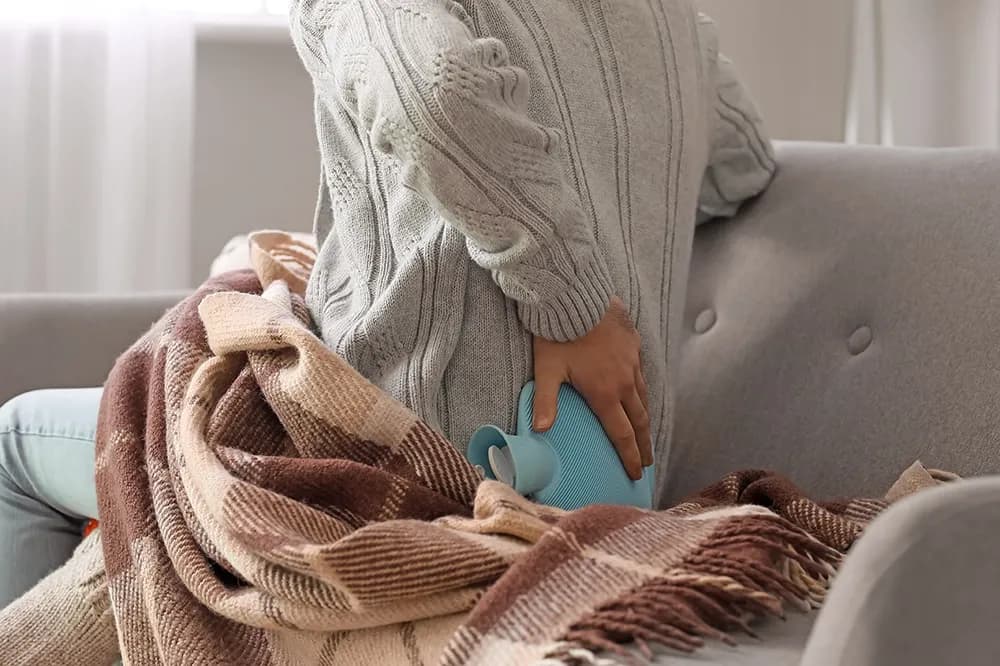Low back pain: definition, causes and symptoms
Like many people, you've probably already suffered from back pain.
Common low back pain is both a public health problem with a major economic and social impact, and an occupational health problem that can lead to people losing their jobs, as it can result in repeated work stoppages, depending on the sector.
Understanding the back
The spinal column
Also known as the rachis, the spine is the main axis of our body. It supports the head, the trunk and the entire human skeleton. It supports the weight of the upper body and enables us to stand upright.
The spine is also one of the strongest parts of our body, protecting the spinal cord.
Our spine is made up of 24 mobile vertebrae and 9 fused vertebrae. In the case of low back pain (also known as lumbago), it is the 5 lumbar vertebrae (belonging to the mobile vertebrae) that are affected.
However, there are other pathologies linked to the spinal column, such as :
- Degenerative disc diseases
- Disc herniation
- Cervico-brachial neuralgia or sciatica in the leg
- Deviations of the spine
What are the lumbar vertebrae?
The lumbar vertebrae are part of the 24 mobile vertebrae of our spine. They are the 5 mobile vertebrae furthest down the back, before the 9 fused vertebrae that make up the sacrum and coccyx.
Low back pain is widespread: 60-90% of the adult population suffers from it or has already suffered from it! Contrary to popular belief, prolonged rest does not cure it, and in fact encourages it to become chronic. So it's vital to keep physically active, even if you have back pain. Be careful, of course, not to overdo it. Listen to your body.
The lumbar region is very frequently the site of ‘common’ pain, in other words pain that is not caused by inflammatory, traumatic, tumour-related or infectious conditions (90% of cases). 14.5 million cases of common low back pain are diagnosed every year! Age is a real risk factor, since people aged between 55 and 65 are the most affected, but it is not the only factor. Pregnancy, lack of physical activity, overweight or obesity, regular long car journeys, stress or frequent handling of heavy loads are other factors that aggravate the daily lives of patients suffering from back pain.
Low back pain
What is a lumbago? And how long does it last?
Lumbago (also known as lower back pain) is pain in the lower back.
Not all lumbago is the same! They may : appear gradually over a period of months or suddenly following a wrong movement; be accompanied or not by a herniated disc (protrusion of an intervertebral disc from its seat); be acute (lasting less than 6 weeks), sub-acute (between 6 and 12 weeks) or chronic (lasting more than three months, sometimes years).
What causes low back pain?
When it comes to low back pain, it's difficult to identify a single cause, as it often has a multifactorial origin. The most common causes of lower back pain are a pulled muscle or ligament, a ruptured disc, arthritis, bone irregularities or osteoporosis.
Lumbago and lumbosciatica, two common forms of acute low back pain
Lumbago manifests itself as a blockage accompanied by acute pain in the lower back and possibly the leg, without extending beyond the bottom of the buttock. What causes it? It generally appears after an unusual effort and is accompanied by considerable difficulty in moving. Lumbago heals spontaneously in 8 to 15 days, but recurrences are possible.
Lumbosciatica manifests itself as a sharp pain in the lower back extending down the leg to the toes. In 95% of cases, it is caused by irritation of one of the sciatic nerve roots by a herniated disc. It often occurs in people with a history of low back pain and following even modest exertion.
How long does sciatic lumbago last?
It tends to improve spontaneously: 80% of sufferers are cured within two months, and 95% within 1 year.
How is lumbago treated?
What is the treatment for lumbago?
The treatment for low back pain and lumbosciatica includes painkillers and anti-inflammatories, relative rest (bed rest is to be avoided), and continued physical activity within the limits of the pain. Exercise is one of the pillars of treatment. Wearing a lumbar support belt can speed up the reduction in pain and recovery of mobility, without having a negative effect on the musculature, contrary to popular belief. Surgery is rarely necessary.
What can be done to relieve back pain?
When the pain persists...
Chronic low back pain can follow on from low back pain or develop gradually without any particular cause. Mainly linked to wear and tear and microtrauma, it can be aggravated by a static disorder, muscular weakness and stress. Treatment includes painkillers, physiotherapy with targeted exercises and regular physical activity, both of which reduce pain and improve functional capacity.
How can back pain be prevented?
Although back pain is common, it is rarely linked to a serious illness. It is important to note that even in the case of very painful back pain, the spine is not usually damaged. What's more, persistent pain is not necessarily a sign of worsening.
For several years now, the French National Health Insurance has been running a prevention campaign called ‘Back pain: the right treatment is movement’. According to its recommendations, good physical condition and regular exercise are the main factors in preventing back pain. Prevention also involves adopting appropriate posture, both at home and at work. Finally, ‘bed rest for more than a day or two is not a therapeutic solution’, warns the National Health Insurance. It adds: ‘Staying active helps you get better more quickly and prevents other back problems. The sooner you resume your activities, the sooner you'll get better’.
If in doubt, consult your doctor for a medical diagnosis of low back pain.
To find out all about the different types of back pain, read this article.
- Anaes / Service des Recommandations et Références Professionnelles /Prise en charge diagnostique et thérapeutique des lombalgies et lombosciatiques communes de moins de 3 mois d’évolution. février 2000.
- Anaes / Service des recommandations et références professionnelles : Diagnostic, prise en charge et suivi des malades atteints de lombalgie chronique, décembre 2000
- Collège Français des Enseignants en Rhumatologie : Item 2015 : Rachialgies. 2010-2011


